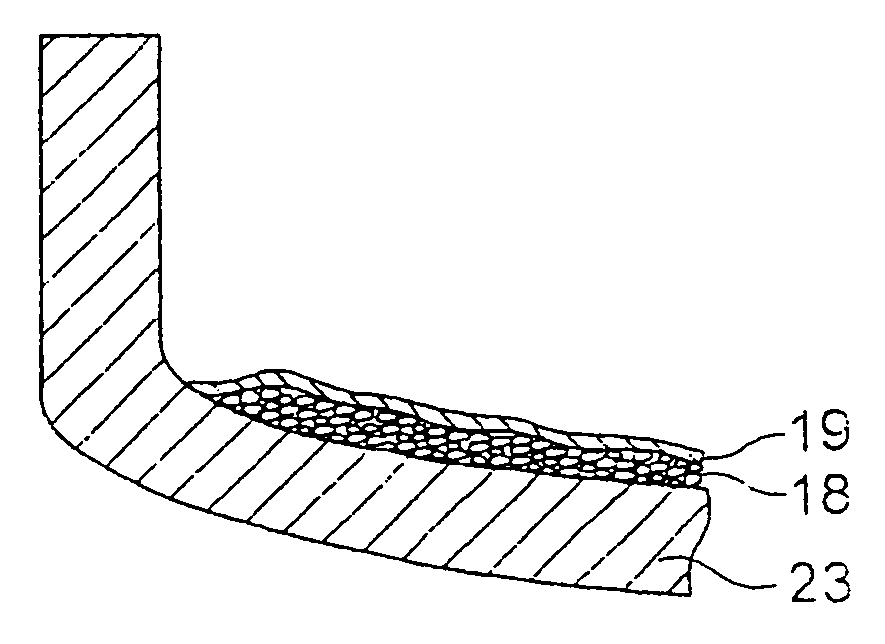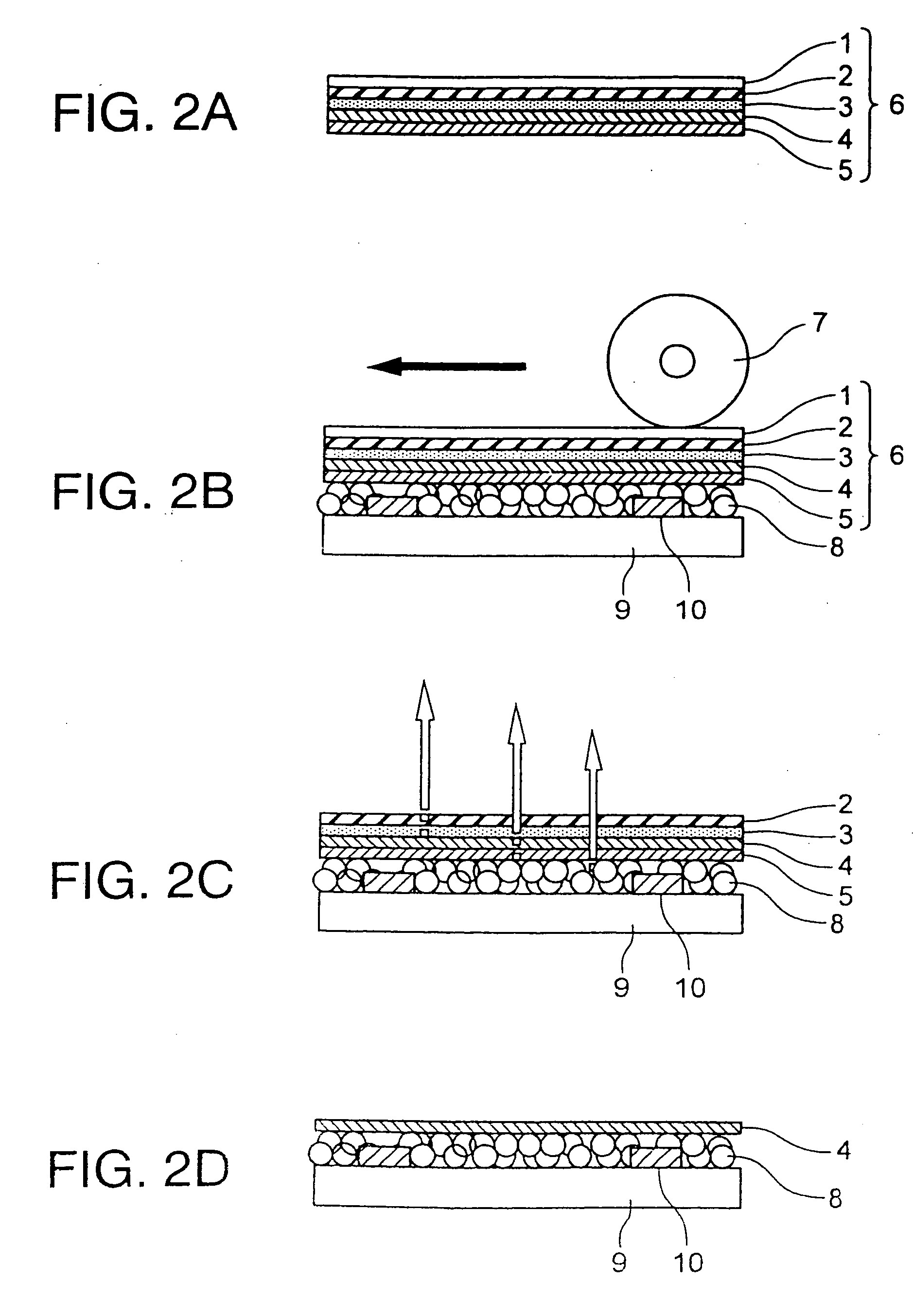Transfer film, method for forming metal back layer, and display device
a technology of metal back layer and transfer film, which is applied in the direction of thermography, electric discharge tube/lamp manufacture, and application of luminescent coatings, etc., can solve the problems of deteriorating the optical reflection performance of the metal back layer, difficult to keep the baking resistance characteristic in good condition, and conventional transfer methods that are difficult to put into actual use. achieve the effect of high resistan
- Summary
- Abstract
- Description
- Claims
- Application Information
AI Technical Summary
Benefits of technology
Problems solved by technology
Method used
Image
Examples
first embodiment
[0076]FIG. 7 is a sectional diagram showing the transfer film of the invention. In the drawing, reference numeral 11 denotes a base film, on which a parting-agent layer 12, a protective film 13, a metal film 14 and an adhesive-agent layer 15 are stacked in order.
[0077] The base film 11 is not particularly limited but can be made of a resin selected from polyester (polyethylene terephthalate, polybutylene terephthalate), polyethylene, polypropylene, nylon (polyamide), cellophane, polycarbonate, polyacrylate, polyimide and aromatic polyamide which are generally used as a base film. This base film 11 desirably has a thickness of about 5 to 50 μm. If the base film 11 is excessively thin, deformation is excessive and wrinkles etc. are easily generated in the metal film 14 when the transfer film is under the pressing treatment. And, if it is excessively thick, followability for the base is deteriorated, and the transfer property is lowered.
[0078] As a parting agent, cellulose acetate, wa...
second embodiment
[0089] Then, the transfer film according to the present invention will be explained. As shown in FIG. 8, the transfer film has the parting-agent layer 12 formed on the base film 11, a high resistance layer 16 having a surface resistivity of 102 to 108 Ω / □ and the adhesive-agent layer 15 are stacked on it. It may also be configured to have the protective film between the parting-agent layer 12 and the high resistance layer 16. The high resistance layer 16 is desired to have a thickness of 5 to 150 nm, and more preferably in a range of 10 to 100 nm.
[0090] The material for the high resistance layer 16 can be many kinds of inorganic materials such as aluminum oxide, silicon dioxide (SiO2), AlN and TiN. The following method can be adopted to form the high resistance layer of an aluminum oxide in the transfer film.
[0091] Specifically, a degree of vacuum of about 1×10−4 Pa is provided, and by depositing aluminum on the parting-agent layer or the protective film while introducing oxygen th...
third embodiment
[0098] Next, the transfer film according to the present invention will be explained. As shown in FIG. 12, in the transfer film, the parting-agent layer 12 is formed on the base film 11, and a transfer layer 20 for forming a metal back and the adhesive-agent layer 15 are stacked on it. The transfer layer 20 has a two-layer structure in which a low resistance layer 22 having a surface resistivity of less than 102 Ω / □ and good reflectiveness is stacked on a high resistance layer 21 having a surface resistivity of 102 to 108 Ω / □. The transfer layer 20 having the above two-layer structure is desired to have a total thickness of 5 to 150 nm, and more preferably in a range of 10 to 100 nm.
[0099] The above transfer film is used to form a phosphor screen having a metal back as shown in FIG. 13. On this phosphor screen, the metal back layer 19, which is comprised of the low resistance layer 22 having a surface resistivity of less than 103 Ω / □ and good reflectiveness and the high resistance la...
PUM
| Property | Measurement | Unit |
|---|---|---|
| resistance | aaaaa | aaaaa |
| resistance | aaaaa | aaaaa |
| resistance | aaaaa | aaaaa |
Abstract
Description
Claims
Application Information
 Login to View More
Login to View More - R&D
- Intellectual Property
- Life Sciences
- Materials
- Tech Scout
- Unparalleled Data Quality
- Higher Quality Content
- 60% Fewer Hallucinations
Browse by: Latest US Patents, China's latest patents, Technical Efficacy Thesaurus, Application Domain, Technology Topic, Popular Technical Reports.
© 2025 PatSnap. All rights reserved.Legal|Privacy policy|Modern Slavery Act Transparency Statement|Sitemap|About US| Contact US: help@patsnap.com



